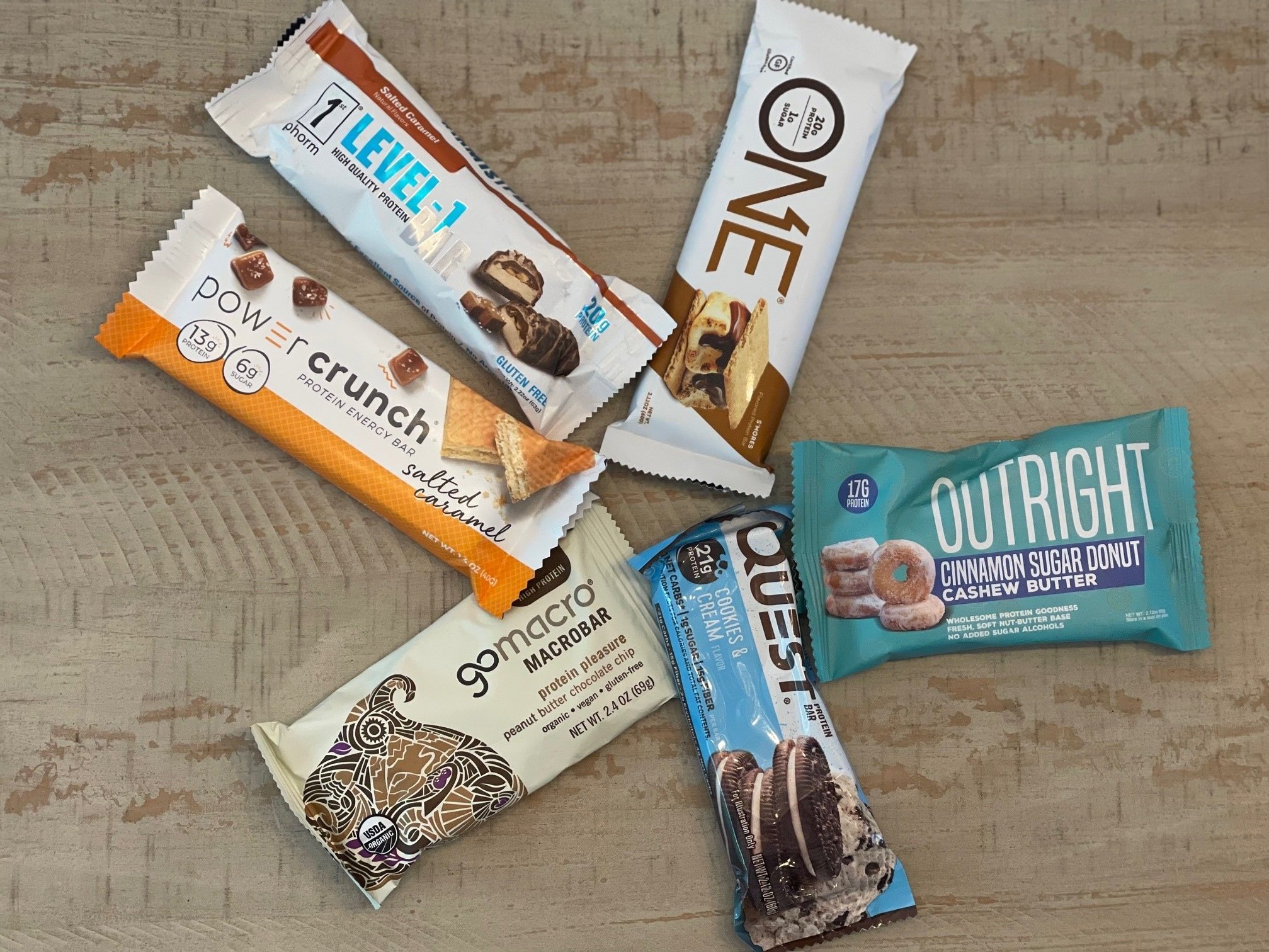4 Important Things to Look at on a Protein Bar Label
They’re individually wrapped, extremely portable and (best of all!) taste like dessert. Protein bars are a convenient grab-and-go food. While I always promote whole food first, protein supplements – including protein bars – are not a bad alternative when you’re in a bind. But before you bite into your next bar, be sure to check the back label. There are a few important features there that can turn a fulfilling snack into a health hazard.
1. Protein
It’s a fact: protein bars have protein. So why bother looking at the details? Not all protein bars are created equally. Some options might provide 10 to 15 grams of protein per bar, while others fall between 20 and 30 grams. These are big differences, especially when you consider daily protein needs for most healthy, strength-training adults is 1.6 g/kg/day. That means an adult who weighs 150 lbs. needs a minimum of 110 g of protein per day.1 Depending on your fitness goals, well-trained females may go up to 2.0 g/kg/day and bodybuilding men might consume 2.2 g/kg/day.2,3 The protein bar you choose should align with your goals. If you just need a quick snack, 10 to 15 grams of protein is sufficient. But when your protein bar is replacing a meal, it’s important to aim high – 20 to 30 grams per bar.
2. Saturated Fat
Too much saturated fat in your diet can contribute to increased cholesterol levels, particularly the “bad” LDL cholesterol. These effects can be detrimental to heart health. To help guide consumers, the 2020-2025 Dietary Guidelines for Americans suggest limiting intake of saturated fat to no more than 10% of your total calories per day.4 For instance, a 2,000-calorie diet would not exceed 200 calories from saturated fat per day, or 22.2 grams. Milk, coconut oil and palm kernel oil are rich sources of saturated fat and common ingredients in protein bars. Look for these on the back label and check the total grams of saturated fat per serving on the Nutrition Facts panel. Your favorite protein bar could easily provide 25% to 35% of the daily recommended allotment for saturated fat.
3. Added Sugar
As sweet as it is, added sugar can do some serious damage to your health. Studies have shown that people who consume 17% to 21% of their calories from added sugar had a 38% higher risk of dying from cardiovascular disease, compared to those who consumed 8% of their daily calories from added sugar.5 This doesn’t mean you can never have dessert again. The key is to be mindful of your intake. Just like saturated fat, the 2020-2025 Dietary Guidelines for Americans recommend keeping added sugar consumption to 10% or less of total daily calories.6 The Food and Drug Administration now requires manufacturers to include information about added sugar on their Nutrition Facts panel, so you can easily spot it. As a subset of Total Sugars, you will see a line that lists the total grams of Added Sugar as well as the % Daily Value. You might be surprised how quickly that added sugar adds up.
4. Sugar Alcohols
Ironically, sugar alcohols are neither sugar nor alcohol. They’re manufactured carbohydrates with a chemical structure similar to sugar. When they touch your tongue, they stimulate sweet taste buds, but they don’t actually provide any nutritional value. Yes, that means sugar alcohols are calorie-free and sugar-free. Diabetics, rejoice! However, for someone with a gastrointestinal disorder, it’s not-so-sweet news. Sugar alcohols tend to have a laxative effect, which can cause diarrhea. This is more of a concern for people with GI issues, especially irritable bowel syndrome.7 But sensitive stomachs should beware, as well. On the protein bar label, you’re looking for ingredients that end in ‘ol’. Though not required, the Nutrition Facts panel may include a line that lists the total grams of sugar alcohol.
References:
1. Morton RW, Murphy KT, McKellar SR, Schoenfeld BJ, Henselmans M, Helms E, Aragon AA, Devries MC, Banfield L, Krieger JW, Phillips SM. A systematic review, meta-analysis and meta-regression of the effect of protein supplementation on resistance training-induced gains in muscle mass and strength in healthy adults. Br J Sports Med. 2018 Mar;52(6):376-384. doi: 10.1136/bjsports-2017-097608.
2. Malowany JM, West DWD, Williamson E, Volterman KA, Abou Sawan S, Mazzulla M, Moore DR. Protein to Maximize Whole-Body Anabolism in Resistance-trained Females after Exercise. Med Sci Sports Exerc. 2019 Apr;51(4):798-804. doi: 10.1249/MSS.0000000000001832.
3. Bandegan A, Courtney-Martin G, Rafii M, Pencharz PB, Lemon PW. Indicator Amino Acid-Derived Estimate of Dietary Protein Requirement for Male Bodybuilders on a Nontraining Day Is Several-Fold Greater than the Current Recommended Dietary Allowance. J Nutr. 2017 May;147(5):850-857. doi: 10.3945/jn.116.236331.
4. United States Department of Agriculture. Current Dietary Guidelines. DietaryGuidelines.gov. Accessed August 5, 2022. https://www.dietaryguidelines.gov/resources/2020-2025-dietary-guidelines-online-materials/top-10-things-you-need-know-about-dietary.
5. Yang Q, Zhang Z, Gregg EW, Flanders WD, Merritt R, Hu FB. Added Sugar Intake and Cardiovascular Diseases Mortality Among US Adults. JAMA Intern Med. 2014;174(4):516–524. doi:10.1001/jamainternmed.2013.13563
6. United States Department of Agriculture. Dietary Guidelines for Americans 2020-2025. DietaryGuidelines.gov. Accessed August 5, 2022. https://www.dietaryguidelines.gov/sites/default/files/2020-12/Dietary_Guidelines_for_Americans_2020-2025.pdf.
7. Ellis E. Irritable Bowel Syndrome. Eat Right. Published April 12, 2022. Accessed August 5, 2022. https://www.eatright.org/health/wellness/digestive-health/irritable-bowel-syndrome.
